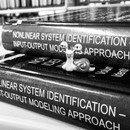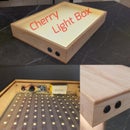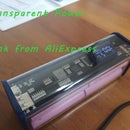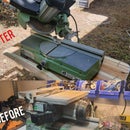Introduction: Chilly - Food Chilling Creature for Kids
Imagine the following:
You and your significant other trying to enjoy a lovely family dinner at home.
Your kid is with you at the table. Let's say 3-4 yo. Mine is 4.
You love your wife and of course both of you adore the kid.
You are trying to eat and to have a quiet conversation.
Let's even make it a science fiction, and remove the phones from the room.
The dinner is lovely, and the conversation is almost flowing.
It's an "almost" just because here and there you are interrupted with:
"Daddy, the food is hot, can you blow on the spoon?"
"Mommy, will you chill my food?"
Being a good parent, you always do.
And yes, sometimes he does this by himself... Sometimes.
And all you wanted is a dinner with no interruptions...
I'm here to help.
What if we can make a "thing" that will help with the chilling task?
And, the kid will even welcome the addition?
Let's get to work!
Enjoy,
Dani
Hope you like the project,
Follow me on Instagram: @medanilevin
Step 1: What Is the Main Idea, the Ingredients
The idea is to have something that will blow on the spoon with hot food and chill it.
Just like you would, or your kid once he is grown up.
I imagined a "dinosaury" like creature that will do the job for me, and the kid will actually like it.
He does!
It was designed with Fusion360 and realized recently.
Here are the things that you will need for the build.
Nothing fancy, very common parts:
- 40 mm fan 12v - 1 unit. eBay, BG
- 1s LiPo charger - 1 unit. eBay, BG
- Small LiPo battery ~300mAh - 2 units. eBay, BG
- 2A Voltage step-up - 1 unit. eBay, BG
- on/off switch - 1 unit. eBay, BG
And things that you probably have somewhere:
- Some loose wiring.
- 4 bolts ~2M or similar
- Some scrap bolts/nuts (will talk about this later)
- Heat shrinking sleeves. For "lifetime supply" I recommend this set.
Tools:
- 3D printer. We are printing parts with PLA.
- Thin CA adhesive (crazy glue). This one is my favorite.
- Hot glue gun.
- Soldering iron.
- Basic hand tools.
Step 2: Print the Parts
There are 4 parts to print.
All of them are at Thingiverse, thing:2812281
3 out of 4 parts require supports.
The good thing is that almost all of them are internal.
And, the long neck comes out with no supports inside, very clean.
Print the parts with PLA
Remove the supports, as you would usually do.
Step 3: Attach the Fan, Extend the Wires, Glue the Head to the Neck
40mm fan is called this way because it is square with 40mm side length.
The bolt holes are spaced 32mm on each side.
You will find places to attach these bolts inside the head of Chilly.
Use 4 bolts, around 2M or 1/16. It doesn't really matter, it goes inside plastic, as long as it fixes the fan.
Important: before securing the fan, hook it up and check the flow direction. You will want the flow towards the mouth :)
Extend the fan wires, so they will go past the neck with length to spare.
Glue the neck and head.
My method of choice here is to first secure the position with hot glue.
Then soak the seam with thin CA.
It is a strong bond!
Step 4: Place the Charger and Batteries
There is a place for the charger at the base (belly).
It will be facing down.
Make sure it is clear and the pcb can be placed, secure it with hot glue.
Then drip several drops of CA between the hot glue and the 3d printed belly.
Wire the batteries in parallel.
Solder them to the pcb where B-/+ terminals are.
Secure the batteries flat on the belly with hot glue.
Step 5: Add Switch, Voltage Booster, Wire It Up
Add the switch through the upper portion of the body.
Tighten up.
Solder the wire that come from the fan (through the neck) directly to voltage booster output.
The voltage booster goes vertically in between the batteries.
Make sure the pot screw is accessible to you.
Wire the charger pcb output (-) to voltage booster input (-).
Solder one wire to the charger pcb output (+).
Solder additional wire to the voltage booster input (+).
Glue down the voltage booster with hot glue.
Make sure that everything closes up nicely!
Finally, solder the two exposed wires through the switch.
Step 6: A Note About Balance and Closing
I planned the whole thing so it will stand up right and stable.
The internal components should provide it with all the ballast it needs.
However, I opted for additional weight inside, you can see the hot glued grub screws inside.
Once everything is in place, and you verified functionality,
CA the perimeter and squeeze tightly.
Once the base is glued, add the final back-head-lid.
Thats it!
Enjoy,
Dani













